The AMD Radeon RX 5600 XT Review, Feat. Sapphire Pulse: A New Challenger For Mainstream Gaming
by Ryan Smith on January 21, 2020 9:01 AM ESTSynthetics
Moving on, we have our synthetic performance testing, taking a look at geometry throughput, pixel throughput, memory compression, and more.
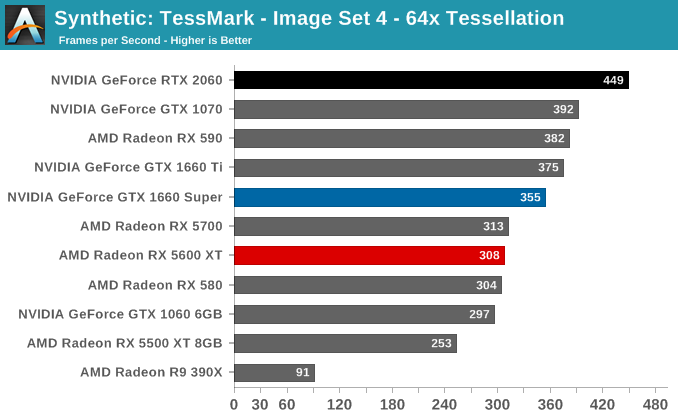
Given the significance of cutting a quarter of Navi 10’s GDDR6 memory bus, I was very curious to see what that would do for synthetic performance. But for better or worse, this has created more questions than it has solved.
The numbers listed below are accurate, in as much as these are the results I get when testing these cards. Whether they are correct, however, is another matter.
The problem, in short, is that due to AMD’s very aggressive power savings/idling implementation for their Navi 10 cards, I have been unable to get these cards to run at their full memory clockspeeds when executing the the Beyond3D Suite benchmark suite. The GPU clocks regularly pass 1600MHz like they should, however AMD’s telemetry is reporting that memory clocks are rarely hitting 7Gbps, let alone 12Gbps+. As a result, we end up with results like the pixel test below, where the RX 5600 XT is beating the RX 5700, an otherwise impossible outcome.
As best as I can tell, this issue has been going on since the launch of the Radeon RX 5700 series back in July, but it’s only now that I’ve noticed it, in large part due to the RX 5600 XT cards being slightly less aggressive in their idling. In other words, those cards are boosting to higher memory clockspeeds more often, putting them ahead of the RX 5700 and bringing the clocking issue front and center.
I’m still working on a proper fix for the issue, but for now the results with Navi 10 cards should be taken with a large grain of salt. The benchmark itself is still fine, but AMD’s aggressive power management (and lack of an easy means to disable it) is kneecapping AMD’s performance in these benchmarks.
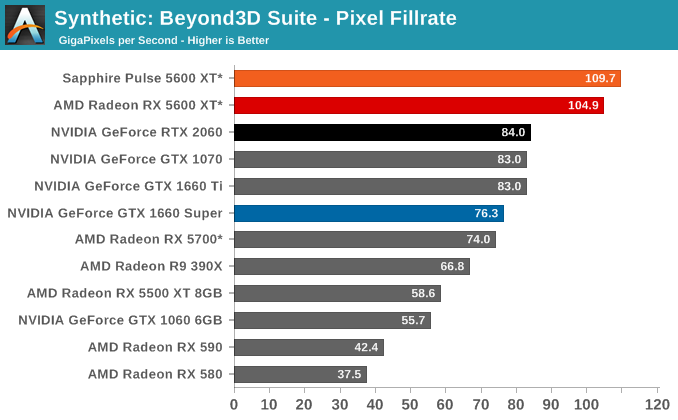

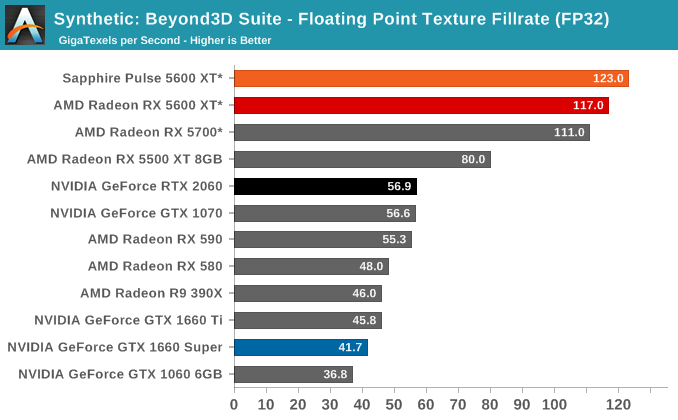
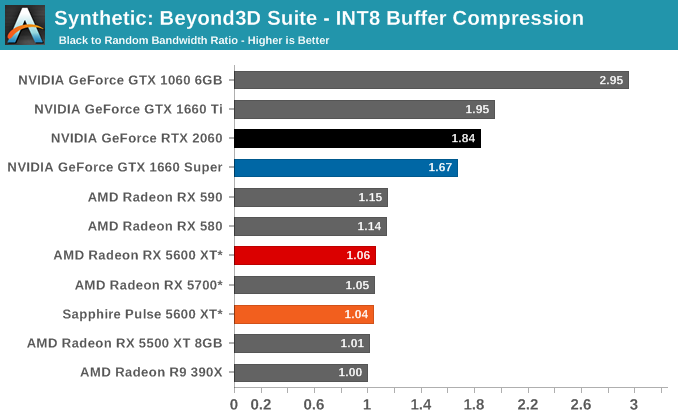
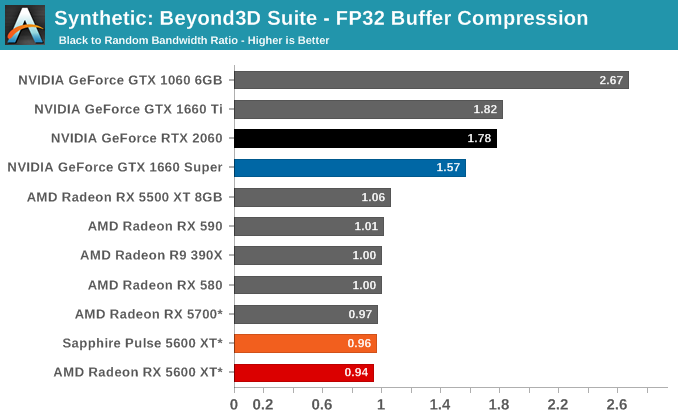










202 Comments
View All Comments
Eduardo Franco - Saturday, January 25, 2020 - link
I think what they wanted to say is that for $ 20 more you not only get the gross yield of the RTX 2060 (a little higher than the 5600 XT), but also the RT cores (Raytracing) and Tensor Cores (DLSS). However, few games take advantage of these technologies and, as the owner of a 2080 Super, I must say that I barely use these technologies, so you could perfectly think of buying a 5600 XT before a 2060. Greetings !!!dr.denton - Wednesday, January 29, 2020 - link
Thanks for being the responsible grown up here :)TheinsanegamerN - Wednesday, January 22, 2020 - link
Because you can ALSO OC the 2060, did you forget that? OC to OC, the 2060 is about 10% faster, which many would say is worth the $20. Nobody cares about power usage, unless it prevents the chip from running at full speed, which isnt the case here, as the 5600xt is firmware limited, not power limited.jragonsoul - Wednesday, January 22, 2020 - link
Lets have some actual tech reviewers that do OC's push the cards. I'm interested in seeing how the respective cards perform but a lot of people don't OC so at the current price point and the current performance AMD is the winner here.schujj07 - Wednesday, January 22, 2020 - link
@RyanSmith was the 2060 used in the review a Founders Edition or vanilla 2060?jragonsoul - Wednesday, January 22, 2020 - link
Very important to note the only 2060 at 300 dollars is the EVGA 2060 K.O. which is a cut down 2060. So make of that what you will.Retycint - Wednesday, January 22, 2020 - link
The founder's edition is also cut down to $300, however stock availability is a bit of an issue right now it seemssonny73n - Thursday, January 23, 2020 - link
The reference RTX 2060 is $299 on nVidia.com right now. The EVGA 2060 KO has the same CUDA cores count which is 1920 but with better boost clock.Please go somewhere else with your bullshits.
Korguz - Thursday, January 23, 2020 - link
you 1st sonny73nRyan Smith - Wednesday, January 22, 2020 - link
Founders edition. Which offers pure reference (vanilla) performance.